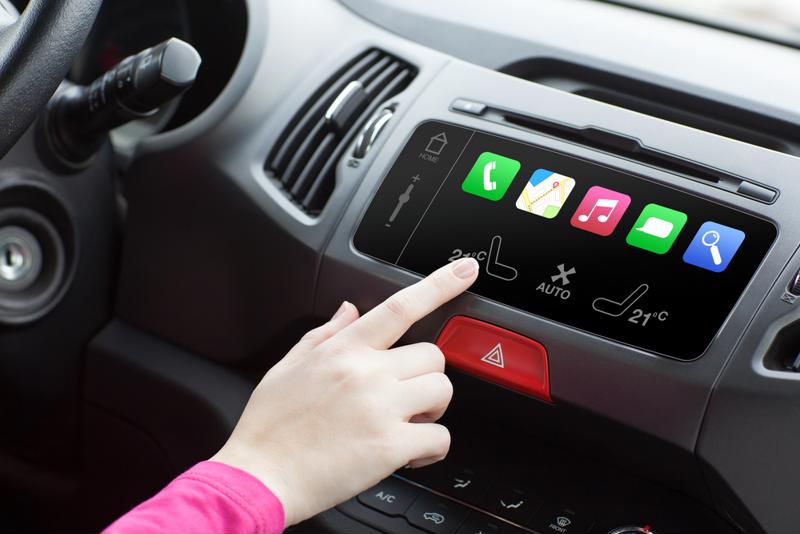Every scroll on social media and every channel change on the television is an active search for information. But since power is built on information and attention is the link that connects it all, every piece of content a person consumes has to draw them in. Even when driving, people constantly explore different ways to stay connected, informed and entertained.
Nowadays, people who purchase vehicles not only prioritize energy efficiency and horsepower, but according to Grape Up, they also rely on the vehicle's immersive infotainment capabilities that flawlessly integrate with their digital lives. From then until now, manufacturers have observed and kept up with new trends and technologies to skillfully infuse them into our vehicles.
Reverse: Car entertainment then
Though they were crackling, had a low frequency range and a mono sound, AM car radios were the main source of in-vehicle entertainment around the 1930s and 1950s, as per LifeWire. It even got better with PM radios. Eventually they added buttons and obtained the ability to store data, which automatically selected the driver's preferred radio station.
Two decades later, modern stereo and 8-track cassette tapes became popular, and then came compact cassette tapes. This was a game changer for drivers back then since they could travel and enjoy the convenience of being able to take their favorite music with them.
Changing gears with digital media
In the late 1990s, there was a significant shift in in-vehicle entertainment, all due to the rise of digital media. Let's look at some of the advancements:
In-car navigation system: Fold-out paper maps and street directories made traveling more tedious, risky and less fun. So when the first in-car navigation system was introduced in 1981, the traveling game changed. People could explore places without having prior knowledge of the routes.
CDs: While CDs have almost been wiped out by more advanced digital technology in the modern age, they were a very popular source of car entertainment in the 1990s, providing travelers with higher-quality sounds that could play for longer periods.
MP3 and digital music services: When MP3 technology was introduced, some common problems were eliminated, such as leaving your CD at home and having it lost or damaged. It also offered more flexibility, especially with digital music services like Spotify and iTunes, where you could also listen to podcasts and audiobooks. Convenience was another breakthrough with MP3; entertainment lasted longer, and drivers could connect the car's infotainment system to external devices.
Streaming video services: Video streaming was a huge shift in car entertainment. It helped keep passengers awake and engaged. Additionally, it made traveling with children easier since they could keep themselves amused with their preferred cartoon, movie or YouTube content. This also made public transportation feel like an airplane ride because passengers got to view their favorite entertainment while on the go, enhancing the experience and increasing comfort.

The highway to in-vehicle infotainment upgrades
Video streaming in cars — can it get better than that? Well, it does. The infotainment systems in vehicles today aren't just about being able to listen or watch content while traveling; they're about creating a wholesome experience mixed with fun, safety, comfort, convenience and modernity. Here are some of the upgrades to in-vehicle infotainment systems today:
Touch screen systems: Touch screen systems, now with GPS and music capabilities, provide an easy-to-use interface for quick access to functionality.
Bluetooth capabilities and auxiliary inputs: Bluetooth and auxiliary inputs facilitate wireless and cable connectivity to mobile devices, like smartphones and tablets, to seamlessly stream audio content.
Voice control: Welcome to the era where you talk to your car and it responds, allowing drivers to access numerous infotainment settings while keeping their hands on the wheel and eyes on the road.
WiFi connectivity: Wi-Fi in cars? Yes. Now passengers can connect their gadgets to the internet for streaming, surfing and other online activities.
Smartphone integration: Smartphone integration allows the infotainment system to reflect or control some aspects of a connected mobile device.
Steering towards the future of in-vehicle infotainment
In-vehicle infotainment has come a long way and just as other industries are quickly adapting to tech advancements, so will the automotive industry. Thus, the driving experience will become more personalized and intuitive with artificial intelligence (AI). Additionally, the merging of augmented reality (AR) and virtual reality (VR) technologies will convert monotonous road trips into fascinating excursions with increased navigation and entertainment options. Finally, gaming will be moved from rooms to car seats to make car trips more pleasant and engaging.
Greening Testing Laboratories is a fully certified brake testing lab that provides a variety of brake testing services worldwide. Contact Greening for a complimentary consultation.
